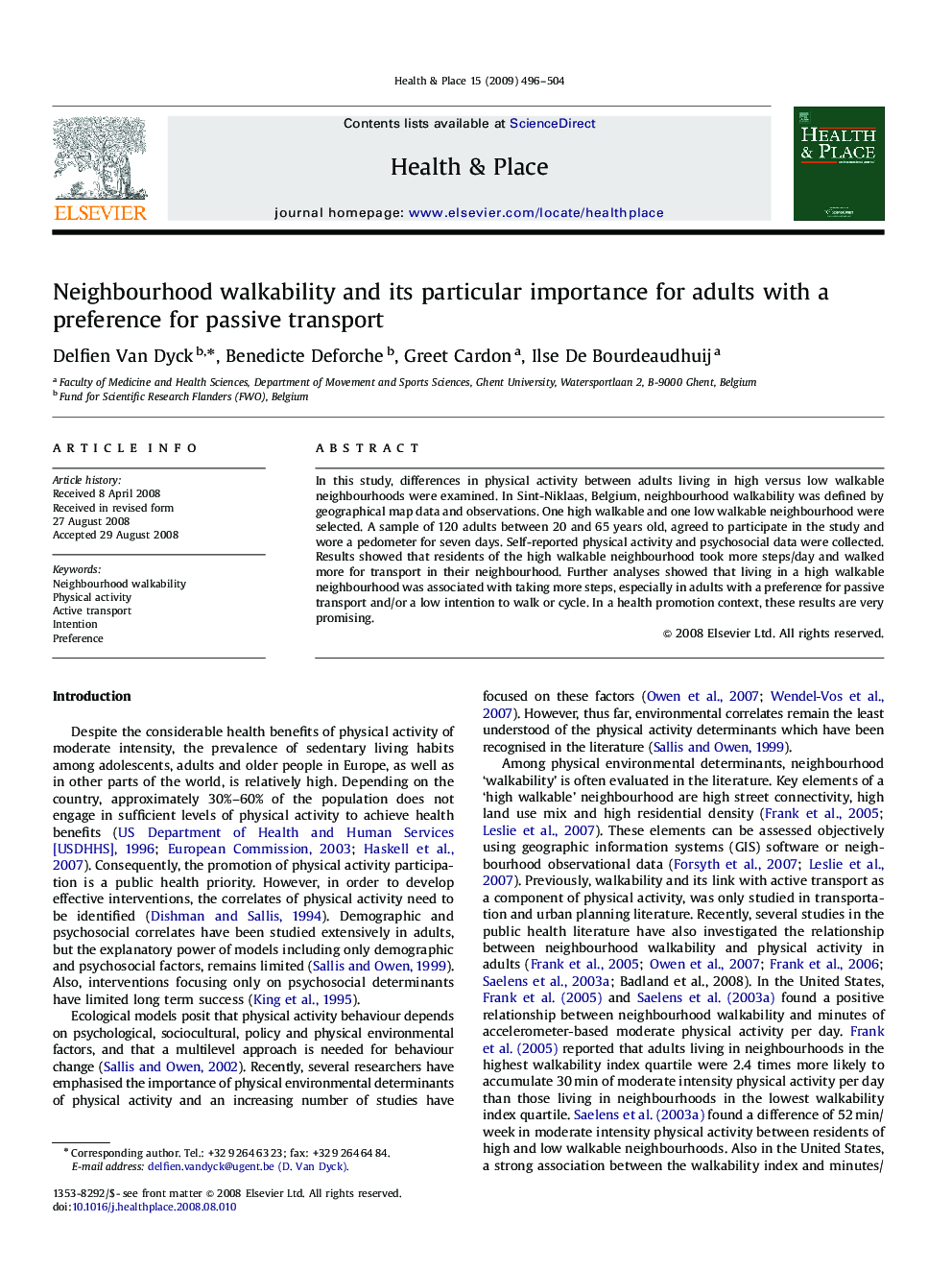| Article ID | Journal | Published Year | Pages | File Type |
|---|---|---|---|---|
| 1048875 | Health & Place | 2009 | 9 Pages |
In this study, differences in physical activity between adults living in high versus low walkable neighbourhoods were examined. In Sint-Niklaas, Belgium, neighbourhood walkability was defined by geographical map data and observations. One high walkable and one low walkable neighbourhood were selected. A sample of 120 adults between 20 and 65 years old, agreed to participate in the study and wore a pedometer for seven days. Self-reported physical activity and psychosocial data were collected. Results showed that residents of the high walkable neighbourhood took more steps/day and walked more for transport in their neighbourhood. Further analyses showed that living in a high walkable neighbourhood was associated with taking more steps, especially in adults with a preference for passive transport and/or a low intention to walk or cycle. In a health promotion context, these results are very promising.
